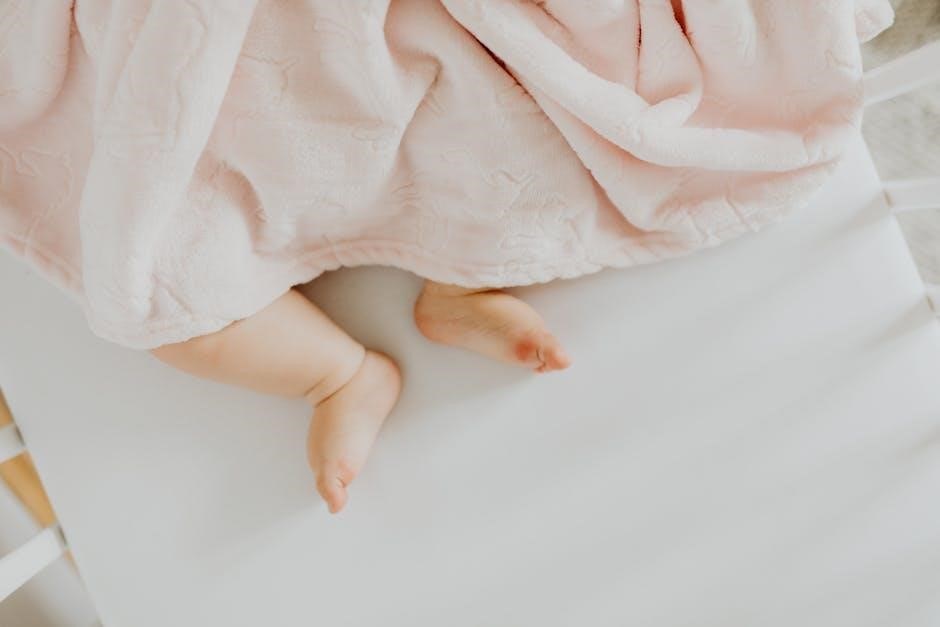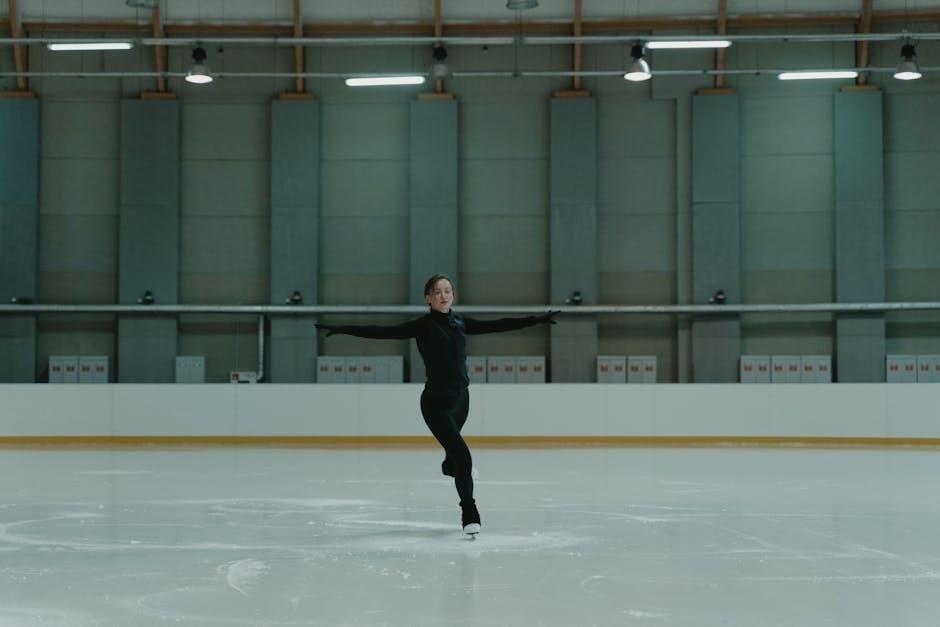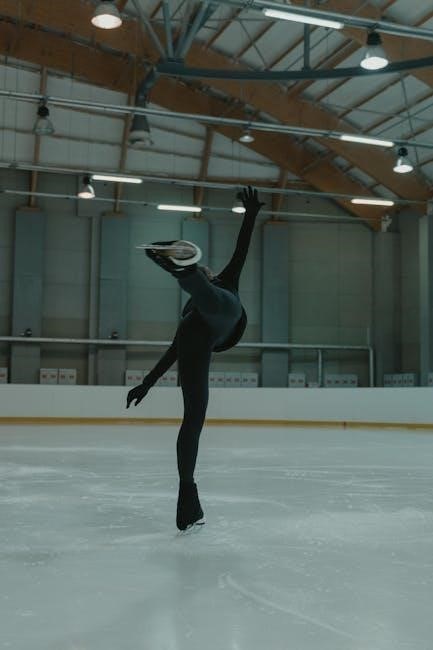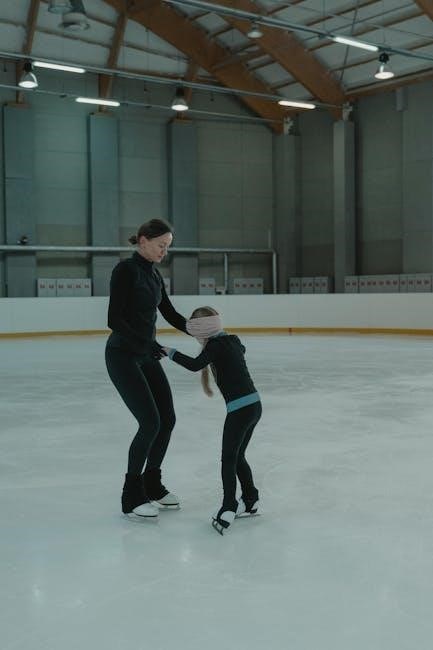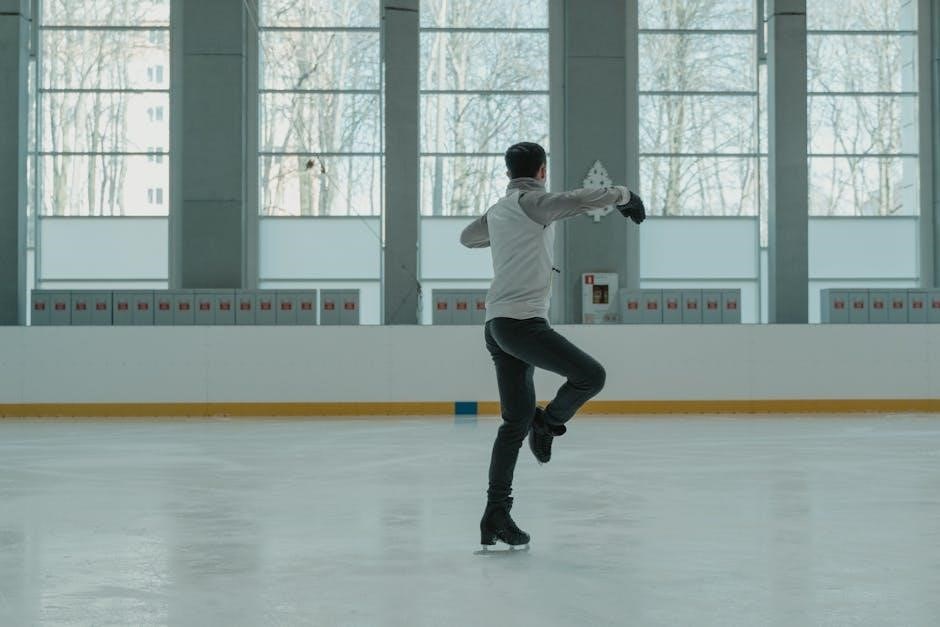Drake’s production style blends emotive melodies with contemporary rhythms‚ creating a unique sound that resonates globally‚ while his collaborations and innovative approaches redefine modern music production.
1.1 Overview of Drake’s Role in Music Production

Drake’s role in music production extends beyond his identity as a renowned artist; he is also a skilled producer and collaborator who has significantly shaped contemporary music. His ability to blend emotive melodies with modern production techniques has created a distinctive sound that resonates with global audiences. As a rapper‚ singer‚ and songwriter‚ Drake’s versatility allows him to experiment with various genres‚ from hip-hop to R&B and pop. His productions often incorporate introspective lyrics‚ atmospheric beats‚ and catchy hooks‚ making his work both personal and commercially successful. Beyond his own music‚ Drake has collaborated with other artists‚ contributing to tracks that have defined the sound of the 2010s and 2020s. His influence extends to the business side of music‚ as he has co-founded OVO Sound‚ a label that nurtures emerging talent and pushes boundaries in music production.
1.2 Importance of Drake’s Contributions to Contemporary Music
Drake’s contributions to contemporary music are monumental‚ reshaping the industry’s landscape through his innovative production and cultural impact. His ability to merge hip-hop with R&B and pop has created a genre-blurring sound that appeals to a wide audience. Drake’s music often explores themes of introspection‚ emotional vulnerability‚ and personal growth‚ resonating deeply with listeners. His use of streaming platforms has revolutionized how music is consumed‚ with his records frequently breaking streaming records. Additionally‚ Drake’s collaborations with other artists and producers have elevated their careers‚ fostering a collaborative ecosystem in the music industry. His influence extends beyond music‚ impacting fashion and entrepreneurship‚ solidifying his role as a cultural icon. Drake’s contributions have not only defined his era but continue to inspire future generations of musicians and producers‚ ensuring his lasting legacy in contemporary music.

Early Life and Musical Beginnings
Drake was born in Toronto‚ Canada‚ and began his career in the entertainment industry as an actor before transitioning to music‚ influenced by hip-hop and R&B.
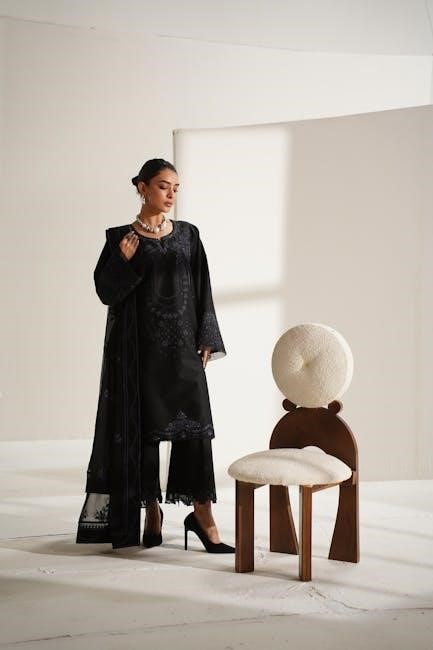
2.1 Drake’s Background and Entry into the Music Industry
Drake was born Aubrey Drake Graham in Toronto‚ Canada‚ to a family with a musical background. His early career began in acting‚ notably on the teen drama Degrassi: The Next Generation. However‚ his passion for music led him to pursue a career in hip-hop. Inspired by artists like Lil Wayne and Kanye West‚ Drake started rapping in his late teens. He gained traction with mixtapes like Room for Improvement and So Far Gone‚ which caught the attention of Lil Wayne. In 2009‚ Drake signed with Young Money Entertainment and Cash Money Records‚ marking his official entry into the music industry. His unique blend of singing and rapping set him apart‚ quickly establishing him as a rising star in contemporary music.
2.2 Early Influences and Musical Ventures
Drake’s early musical influences were shaped by his upbringing in Toronto‚ where he was exposed to a mix of hip-hop‚ R&B‚ and reggae. Artists like Lil Wayne‚ Kanye West‚ and The Notorious B.I.G. significantly impacted his style. Drake’s journey began with self-released mixtapes‚ such as Room for Improvement and So Far Gone‚ which showcased his lyrical depth and melodic flow. These projects gained traction online‚ particularly through platforms like MySpace‚ and helped him build a loyal fanbase. His unique ability to blend introspective lyrics with catchy hooks set him apart from other emerging artists. The success of So Far Gone led to his signing with Young Money Entertainment‚ marking the start of his professional career. Drake’s early ventures were characterized by experimentation and a willingness to push boundaries‚ laying the foundation for his future success.

Drake’s Production Style and Techniques
Drake’s production style is characterized by atmospheric beats‚ introspective lyrics‚ and a seamless blend of hip-hop‚ R&B‚ and pop. His techniques emphasize emotional depth‚ melodic hooks‚ and genre-blurring innovation‚ creating a signature sound that captivates audiences worldwide.
3.1 Unique Aspects of Drake’s Production Approach
Drake’s production approach stands out for its genre-blurring innovation‚ seamlessly merging hip-hop‚ R&B‚ and pop. His use of atmospheric beats‚ introspective lyrics‚ and melodic hooks creates a distinct sonic identity. Drake’s ability to craft emotionally resonant tracks‚ often focusing on personal narratives‚ sets him apart. His incorporation of minimalist yet impactful production elements‚ such as haunting vocal samples and textured synths‚ adds depth to his music. Additionally‚ Drake’s collaborative ethos‚ working with top producers and artists‚ ensures a fresh‚ contemporary sound. His willingness to experiment with unconventional rhythms and tempos further highlights his unique approach. By balancing vulnerability with catchy hooks‚ Drake’s production style has redefined modern music‚ appealing to a wide audience while maintaining artistic integrity.
3.2 Use of Technology and Software in Drake’s Productions
Drake’s music production heavily relies on cutting-edge technology and software to create his signature sound. He and his team utilize digital audio workstations (DAWs) such as FL Studio‚ Pro Tools‚ and Logic Pro to craft beats‚ edit vocals‚ and mix tracks. The use of virtual instruments‚ effects plugins‚ and MIDI editors allows for precise control over melodies and rhythms. Drake’s producers often incorporate software tools like Serum for synths and FabFilter Pro-Q for EQ adjustments‚ ensuring a polished and modern sound. Additionally‚ hardware such as MIDI controllers and high-quality audio interfaces are integral to their process‚ enabling seamless creativity and professionalism. The strategic use of automation and stereo imaging tools further enhances the dynamic range and spatiality of his productions‚ making Drake’s music stand out in today’s digital landscape while maintaining his unique artistic vision.

Major Collaborations and Co-Productions
Drake’s collaborations with Kendrick Lamar‚ NLE Choppa‚ Imagine Dragons‚ Central Cee‚ and 21 Savage highlight his versatility and success in co-productions‚ blending genres and creating chart-topping hits effortlessly.

4.1 Notable Artists Drake Has Collaborated With
Drake has collaborated with numerous high-profile artists‚ including The Weeknd‚ Kanye West‚ and Chris Brown‚ blending genres like R&B and hip-hop seamlessly. His work with rapper Future on tracks like “Life Is Good” and “Jumpman” has been particularly impactful‚ achieving chart-topping success. Additionally‚ Drake has teamed up with Lil Baby‚ Travis Scott‚ and Cardi B‚ further solidifying his influence in contemporary music. Recent collaborations with artists like Central Cee and 21 Savage showcase his ability to adapt to evolving musical trends. These partnerships not only highlight Drake’s versatility but also his ability to create timeless hits that resonate with diverse audiences. His collaborations have been instrumental in shaping his discography and cementing his status as a pivotal figure in modern music production.
4.2 Breakdown of Drake’s Most Successful Co-Productions
Drake’s most successful co-productions have significantly shaped his career and the music industry. Tracks like “God’s Plan” and “One Dance” showcase his ability to merge emotional depth with infectious beats. Produced alongside Boi-1da and Nineteen85‚ these songs achieved unprecedented streaming records and chart dominance. Collaborations with artists like Future on “Life Is Good” and “Jumpman” further highlight his versatility. Additionally‚ “Hotline Bling‚” produced by Nineteen85‚ became a cultural phenomenon‚ blending soulful melodies with modern production. These co-productions not only solidified Drake’s status as a musical powerhouse but also influenced the direction of contemporary hip-hop and R&B. His ability to craft hits through strategic collaborations has made him a pivotal figure in shaping today’s musical landscape.

Impact on the Music Industry

Drake’s innovative production and streaming strategies have reshaped the music industry‚ influencing chart success and modern consumption patterns‚ while setting new benchmarks for artist collaborations and musical trends.
5.1 How Drake’s Production Has Influenced Modern Music
Drake’s production has significantly influenced modern music by blending genres like hip-hop‚ R&B‚ and pop‚ creating a versatile sound that resonates with diverse audiences. His use of melodic flows‚ introspective lyrics‚ and emotionally charged beats has set a new standard for contemporary artists. Drake’s reliance on digital production tools and software has also popularized the use of technology in music creation‚ inspiring a wave of producers to adopt similar techniques. Additionally‚ his ability to craft songs that dominate streaming platforms has reshaped how music is consumed and measured. Drake’s influence is evident in the rise of melodic rap and the integration of personal storytelling in modern hip-hop. His production choices have not only defined his own success but have also paved the way for future artists to experiment with innovative sounds and styles.
5.2 Drake’s Role in Shaping Streaming and Chart Success
Drake has played a pivotal role in shaping the landscape of streaming and chart success‚ consistently breaking records and dominating platforms like Spotify and Apple Music. His ability to produce hits that resonate with global audiences has made him a key figure in the digital era of music consumption. Drake’s strategic use of singles‚ mixtapes‚ and albums ensures his music remains relevant and widely streamed. His collaborations and viral tracks frequently top charts‚ influencing how artists approach their own release strategies. Additionally‚ his mastery of using platforms like TikTok to boost streams highlights his adaptability to evolving trends. Drake’s impact on streaming success has redefined how the music industry measures achievement‚ solidifying his status as a trailblazer in the digital age.
Intellectual Property and Sampling in Drake’s Work
Drake’s use of samples has sparked both creativity and legal debates‚ showcasing his ability to reinterpret classic tracks while navigating copyright complexities and ensuring proper clearances for his productions.
6.1 Legal and Ethical Considerations in Drake’s Sampling Practices
Drake’s sampling practices have often raised legal and ethical questions‚ as his productions frequently incorporate elements from existing tracks. His team meticulously secures clearances to avoid copyright infringement‚ ensuring proper royalties are paid to original creators. However‚ some cases have sparked disputes‚ with artists or estates claiming insufficient compensation or unauthorized usage. Ethically‚ Drake’s approach highlights the fine line between creative inspiration and intellectual property rights. While his intention may be to pay homage‚ the legal framework demands precise adherence to licensing agreements. These considerations underscore the complexity of sampling in modern music production‚ where artistic vision must align with legal and ethical standards to maintain integrity and avoid conflicts.
6.2 Notable Sampling Disputes and Their Outcomes
Drake has faced several high-profile sampling disputes throughout his career‚ each with significant legal and financial repercussions. One notable case involved the use of a sample from Jimmy Smith’s “Jimmy Smith Rap” in Drake’s track “Pound Cake.” The outcome resulted in a settlement‚ with Drake agreeing to pay a substantial portion of the song’s royalties to the estate of Jimmy Smith. Another dispute arose over the sampling of a spoken-word piece in “If You’re Reading This It’s Too Late‚” leading to a reported six-figure payout. These cases illustrate the financial and reputational risks associated with sampling. Drake’s legal team has often negotiated settlements to avoid prolonged litigation‚ ensuring that disputes are resolved efficiently. These outcomes highlight the importance of proper clearance and the potential consequences of oversight in sampling practices.
Drake’s Personal Brand and Business Ventures
Drake’s personal brand extends far beyond music‚ with ventures like OVO Sound and October’s Very Own‚ showcasing his entrepreneurial spirit and strategic expansion into fashion and entertainment.
7.1 Expansion Beyond Music: Drake’s Entrepreneurial Ventures
Drake’s entrepreneurial ventures highlight his diversified interests beyond music. He founded OVO Sound‚ a record label‚ and October’s Very Own (OVO)‚ a lifestyle brand offering apparel and accessories. Additionally‚ Drake ventured into the spirits industry with Virginia Black Whiskey and partnered with Nike on co-branded merchandise. His involvement in the cannabis industry through More Life Growth further showcases his business acumen. These ventures not only solidify his personal brand but also demonstrate his ability to transcend music‚ creating a multifaceted empire that appeals to a wide audience. By leveraging his influence‚ Drake successfully merges music with fashion‚ lifestyle‚ and entrepreneurship.
7.2 How Drake’s Brand Aligns with His Music Production
Drake’s personal brand seamlessly aligns with his music production‚ creating a cohesive identity that resonates with his audience. His ability to craft emotionally charged‚ relatable lyrics mirrors the authenticity embedded in his entrepreneurial ventures‚ such as OVO and Virginia Black Whiskey. This consistency reinforces his reputation as a multifaceted artist and businessman. Drake’s music production often reflects his personal experiences and values‚ which are also central to his brand. By maintaining a unified tone and message across all platforms‚ he builds a loyal fanbase and strengthens his influence in the industry. His brand strategy‚ blending music with lifestyle and culture‚ ensures that every project‚ whether musical or entrepreneurial‚ feels true to his artistic vision and personal ethos.
Challenges and Criticisms
Drake faces criticism for his lyrical content‚ often labeled as emotionally vague or narcissistic. His dominance in the music industry has also sparked debates about cultural appropriation and market oversaturation.

8.1 Criticism of Drake’s Production and Musical Choices
Drake’s music production and artistic decisions have faced significant criticism. Some argue that his emotional vulnerability often borders on narcissism‚ with critics labeling his lyrics as self-indulgent. Additionally‚ his production style‚ while commercially successful‚ has been accused of being formulaic and overly reliant on melodic repetition. Critics also point to his tendency to dominate the music charts‚ which some view as stifling diversity in the industry. Furthermore‚ Drake has been accused of borrowing heavily from other artists and genres without proper credit‚ raising questions about cultural appropriation. Despite his immense popularity‚ these criticisms highlight the polarizing nature of his artistry and the challenges of maintaining originality in his productions.
8.2 Controversies Surrounding Drake’s Career
Drake’s career has been marred by several high-profile controversies. One notable issue involves accusations of failing to credit artists whose work he has sampled or drawn inspiration from‚ leading to legal disputes. Additionally‚ his involvement in public feuds with other artists has sparked debate about his professionalism and authenticity. For instance‚ his rivalry with another prominent rapper‚ which began over an unreleased song‚ has been widely scrutinized. Critics also argue that Drake’s tendency to align with trends rather than innovate has contributed to the homogenization of contemporary music. Furthermore‚ his perceived dominance in the industry has led to accusations of overshadowing smaller artists‚ raising questions about fairness in music distribution and promotion. These controversies‚ while not hindering his commercial success‚ have undeniably shaped public perception of his career.
Legacy and Future of Drake’s Production
Drake’s production legacy is marked by his innovative techniques and influence on modern music trends. His future likely holds continued evolution‚ experimenting with new sounds and technology‚ ensuring sustained relevance in the industry.
9.1 Long-Term Impact of Drake’s Music Production
Drake’s music production has left an indelible mark on contemporary music‚ blending hip-hop‚ R&B‚ and pop to create a unique sound that resonates globally. His ability to evoke emotion through melodic beats and introspective lyrics has influenced a generation of artists‚ shaping the sonic landscape of modern music. Drake’s production style‚ often characterized by its atmospheric textures and genre-blurring approach‚ has redefined how artists integrate personal narratives into their work. Additionally‚ his collaborations and innovative use of technology have set new standards for music production‚ inspiring producers to experiment with fresh sounds and techniques. As a result‚ Drake’s contributions continue to drive the evolution of music‚ ensuring his legacy as a pivotal figure in the industry’s growth and transformation.
9;2 Speculations on Drake’s Future Projects and Innovations
Speculations about Drake’s future projects hint at continued evolution in his music production and entrepreneurial ventures. Fans anticipate his exploration of new sounds‚ potentially blending genres like Afrobeats or electronic music with his signature style. Rumors suggest collaborations with rising artists and producers‚ fostering fresh creativity. Additionally‚ Drake may expand his OVO Sound label‚ mentoring emerging talent and shaping the next wave of music. Technologically‚ he might adopt cutting-edge tools to enhance his productions‚ further innovating his sound. Beyond music‚ Drake’s ventures into film and fashion could deepen‚ solidifying his status as a cultural icon. With his track record of reinvention‚ Drake’s future endeavors are expected to remain groundbreaking‚ influencing both the music industry and pop culture at large.




















